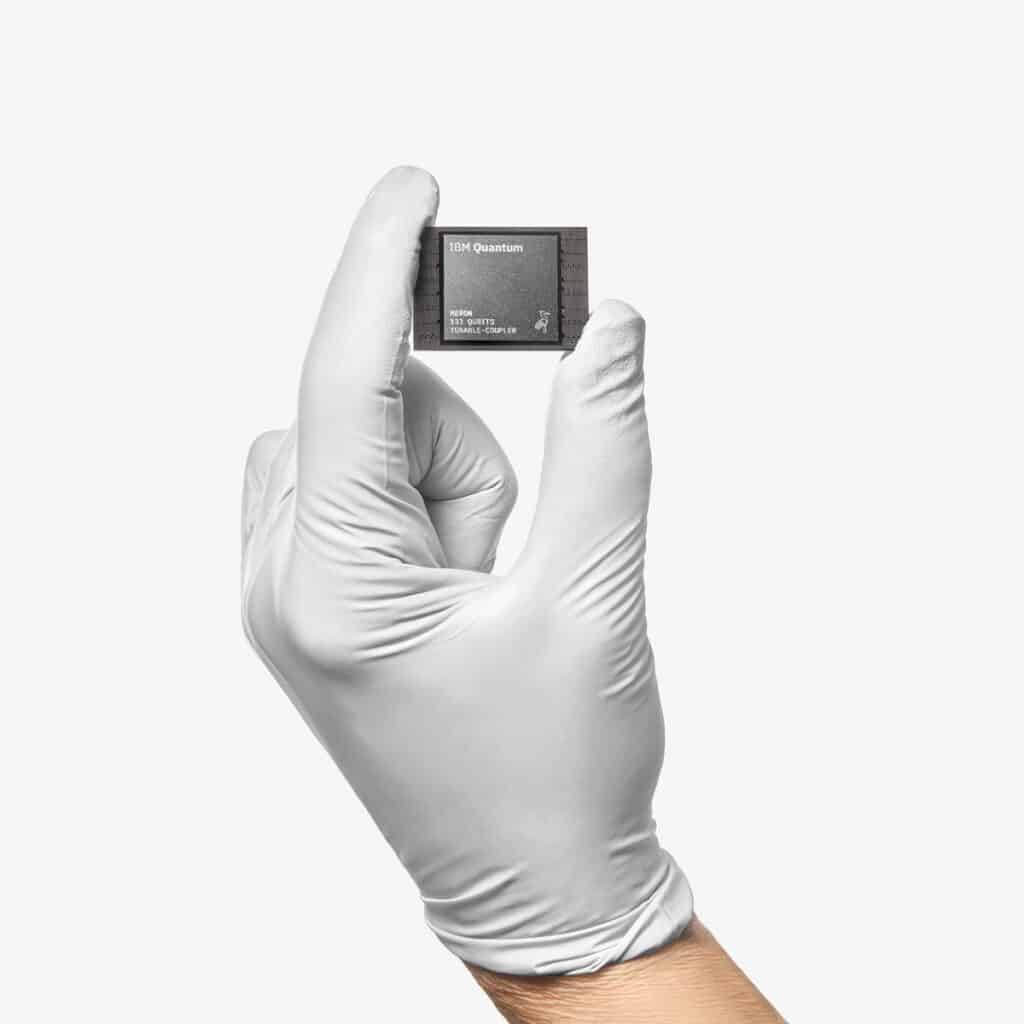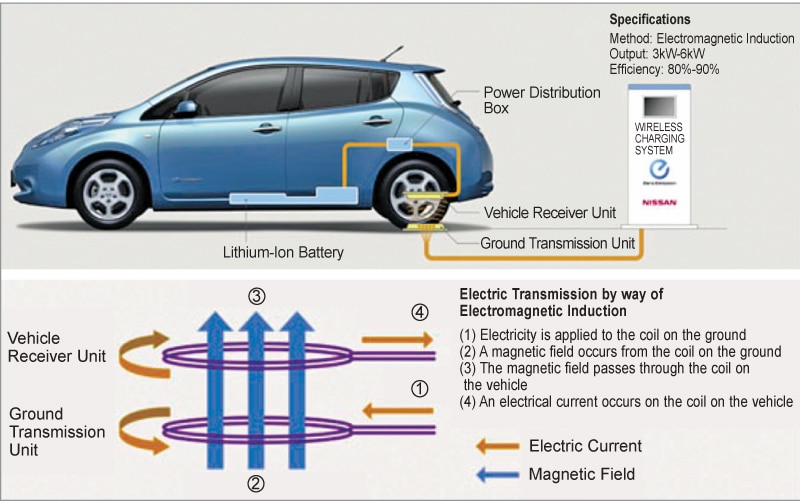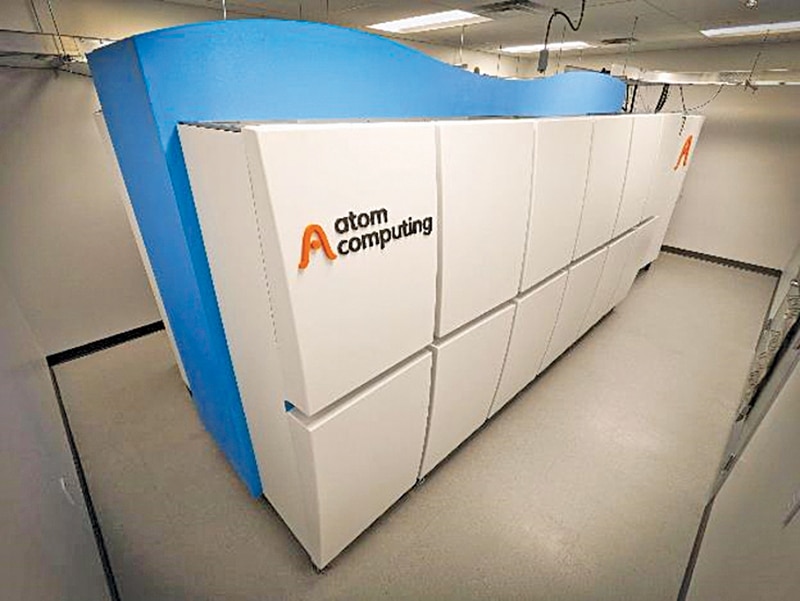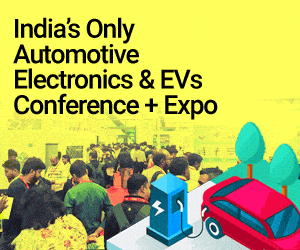Predicting technology is like forecasting the weather! Who knows what tomorrow will bring. Yet, like the brave weathermen, we shall do our bit to prepare you for what might be…
If you recall the predictions for 2023, everyone was ga-ga about the metaverse and non-fungible tokens (NFTs). But I wonder if anyone would dare to even mention these in this year’s predictions—not with so many crypto platforms going bankrupt, and the burgeoning grievances against celebrities like Cristiano Ronaldo, Justin Bieber, and Paris Hilton for promoting NFTs that are now worthless. Some companies like Binance are even facing very serious lawsuits for violating anti-money-laundering and sanctions rules, and for failing to block transactions sending funds to terrorist groups.

On the other hand, the 2023 predictions did talk about artificial intelligence (AI), albeit as just another trend. We could catch phrases like ubiquitous AI, AI everywhere, and adaptive AI, littered across the reports, but none prepared us for generative AI, the tech that stole 2023! We might as well dedicate the year that went by to generative AI, and perhaps the coming year too—because it is dominating everyone’s agenda—from the tech makers and users to the hoi-polloi and the governments too.
And so it is, a prediction is a prediction, and must be taken with a pinch of salt. It is just an indication of what is to come, and not a clear roadmap. With that in mind, we have been through the technology trends predicted by major research firms and analysts for 2024 and jotted down the key points for you to mull over. As the year goes by, we will keep updating you on what really transpires.
Another year hijacked by generative AI
GenAI’s growth spree
GenAI and large-language models (LLMs) will continue to be big. It is OpenAI’s generative pre-training transformer (GPT) model and its chatbot ChatGPT that kind of commoditised AI for anyone and everyone to use.
While ChatGPT has become a household name now, there are others worth their salt like OpenAI Dall-E, Anthropic Claude, Google Bard, Duet AI, Github Copilot, Cohere Generate, and so on. We are also bound to see OpenAI’s GPT Store gain popularity, and similar AI app stores coming up from other players. GenAI is also expected to influence the search industry, bringing about a paradigm shift.
While AI already works behind the scenes, we are bound to see more search engines incorporating more user-facing AI features. GenAI trendwatchers suggest that modalities like image and audio will become more impactful than text—such as the creation of molecular structures, visual AI models, interactive voice response (IVR) in local languages, and so on.
AI-assisted development
We are bound to see genAI and ML aiding software engineers in the design, development, and testing of applications. This will improve the productivity of software engineers by reducing the time spent on writing code and making time available for strategic activities like design. While there is the fear of AI robbing people of their jobs, it is more likely that AI will support developers rather than replace them.
GenAI features in software
Experts feel there is no doubt that genAI features will be included in several software platforms this year. But the real challenge will lie in gauging whether users are willing to pay for these features, and how much. Microsoft, for example, is launching Copilot for Microsoft 365, with a monthly subscription fee.
AI in enterprises, small and large
Democratisation of AI
Gartner projects that by 2030, every dollar of IT spending will have an AI component. Gartner predicts that the democratisation of AI is going to gain steam this year. The report predicts that by 2026, over 80% of enterprises will have used generative AI application programming interfaces (APIs) and models, and/or deployed generative AI-enabled applications in production environments, up from less than 5% in early 2023.
Enterprises likely to train AI with private data
AI models trained on public data are unreliable in many aspects. According to a Deloitte report, “Because generative models have required such massive volumes of training data, the first wave of public models were mainly trained on the largest data set available: the public internet. Thus, these models have also absorbed the many biases, contradictions, inaccuracies, and uncertainties of the internet itself… When pressed for facts, models trained on public data, such as social network posts, may fabricate them. And they can do so with authority, causing many users to believe their assertions without properly fact-checking the results. Popular LLMs were not designed to be factually accurate, but rather statistically accurate.”
To avoid risks of misinformation and hallucination, Deloitte predicts that enterprises might turn to training their AI models using their private enterprise data collected over several years. This will enhance productivity and optimise costs while unlocking complex insights. This trend is likely to further the demand for MLOps partners.
AI TRiSM
As you are likely to have read in our previous issue, world leaders got together at the AI Safety Summit held in the UK in November 2023 to discuss how to put in proper guardrails to mitigate the risks involved in AI. As India’s Minister of State for Electronics and IT, Rajeev Chandrasekhar, rightly said at the summit, AI should not be demonised to the extent that it is regulated out of existence. It is a kinetic enabler of India’s digital economy and presents a big opportunity for us. At the same time, he acknowledged that proper regulations must be in place to avoid misuse of the technology. He opined that in the past decade, countries across the world, including ours, inadvertently let regulations fall behind innovation and are now having to contend with the menace of toxicity and misinformation across social media platforms. As AI has the potential to amplify toxicity and weaponisation to the next level, he said that countries should work together to be ahead, or at least at par with innovation when it comes to regulating AI.
One potential solution that came up at the summit sought tech companies to share their latest AI models with government agencies who will test it comprehensively with advanced computing systems to ensure safety and minimise risks before public release. Even as those high-level efforts are set into motion, it is important that organisational users of AI adopt a proper AI trust, risk, security management (TRiSM) program at the company level. This involves integrating much-needed governance and proper guardrails upfront to proactively ensure that AI systems are compliant, fair, reliable, and protect data privacy. This is extremely important to avoid big mishaps in the future and will find a place in this year’s IT agenda of companies using AI.
| India IT Spending Forecast (US$ Million) | ||||||
| 2022 Spending | 2022 Growth (%) | 2023 Spending | 2023 Growth (%) | 2024 Spending | 2024 Growth (%) | |
| Data Centre Systems | 3,607 | 18.6 | 3,766 | 4.4 | 4,121 | 9.4 |
| Devices | 49,853 | 2.0 | 46,309 | -7.1 | 51,000 | 10.1 |
| Software | 13,115 | 15.1 | 14,931 | 13.8 | 17,689 | 18.5 |
| IT Services | 21,837 | 13.3 | 23,262 | 6.5 | 26,651 | 14.6 |
| Communications Services | 24,651 | 0.2 | 24,287 | -1.5 | 25,148 | 3.5 |
| Overall IT | 113,063 | 5.5 | 112,554 | -0.5 | 124,609 | 10.7 |
Demand for MLOps and ModelOps
With the increasing adoption of AI and machine learning (ML) by industries, the demand for machine learning operations (MLOps) services and professionals is also on the rise and is expected to increase further in 2024.
Traditional MLOps engineers might also have to skill up to learn the nuances of training genAI models as well, to manage the emerging paradigm of ModelOps! According to Gartner, ModelOps “is focused primarily on the governance and lifecycle management of a wide range of operationalised artificial intelligence and decision models, including machine learning, knowledge graphs, rules, optimisation, linguistic and agent-based models.”
Service providers gear up to fill the gap
Forrester’s Predictions 2024 report states that tech leaders will look to boost operations to grow with AI. According to the report, “Tech execs will seek partners to close the AI gap as 50% fail to master it internally. Acquiring the knowledge and skill to deploy genAI, prompt engineering, scenario prioritisation, and new AI-infused applications will drive tech execs straight to their service providers.”
Vendors such as Accenture, Tata Consultancy Services, and Wipro are already gearing up to bridge this gap. The report also suggests that tech executives will recognise this AI movement as an opportunity to rethink external relationships and will work to find a healthy balance between overly-dependent outsourcing and co-innovation partnerships.
Adaptive AI
While genAI is ideal for content creation, street-smart adaptive AI is best-suited for decision-making and process optimisation. It works beautifully in environments where change and complexity are constants, such as industrial monitoring, agricultural surveillance, fraud detection, investment and trading, healthcare, customer service, and robotics.
Hardware trends—A chip off the new block
Demand for generative AI chips
In the Technology, Media, and Telecommunications (TMT) Predictions 2023 report, Deloitte predicts that the market for specialised chips optimised for generative AI will exceed $50 billion in 2024. The report suggests that generative AI chips will constitute two-thirds of the predicted global chip market of $576 billion, with total AI chip sales reaching 11%.
Although generative AI chips are expected to become more accessible and affordable as supply increases, there are concerns about a potential bubble. Some fear that sales could be massive in 2023 and 2024, but actual enterprise generative AI use cases might not materialise, leading to a collapse in demand in 2025, similar to what happened with crypto mining chips in 2018 and 2021.
TrendForce also estimates that shipments of AI servers—including those equipped with graphics processing units (GPUs), field-programmable gate arrays (FPGAs), and application-specific integrated circuits (ASICs) will grow 38% in 2024. Apart from the major contenders like AMD and NVIDIA, we are now beginning to see major cloud service providers such as Google, AWS, Microsoft, and Meta taking giant strides towards developing their own proprietary AI chips. This might eat into the growth potential of GPUs.
General-purpose or customised, they are all going to need high bandwidth memory (HBM). In 2024, HBM3e, with speeds of up to 8Gbps, is likely to be a key enabler of AI compute cores. “With the growing complexity of training models and applications, demand for HBM is expected to skyrocket. It is projected that in 2024, HBM will make a significant contribution to memory suppliers’ revenues given that the average unit price of HBM is several times higher than other DRAM products, for an annual growth rate of 172%” reads the TrendForce forecast.
Improved packaging technologies
After several years of research and development, 2.5D packaging technologies like TSMC’s chip-on-wafer-on-substrate (CoWoS) platform, Intel’s embedded multi-die interconnect bridge (EMIB) technology, and Samsung’s I-Cube, which enhance AI computational power by integrating computing chips and memory, are now widely used in high-performance chips. TrendForce reports that by 2024, suppliers are set to focus on ramping up 2.5D packaging capacity to meet the rising demand for high computational power in applications like AI.
Meanwhile, we also see companies unveiling their 3D packaging technologies, like TSMC’s system on integrated chips (SoIC) 3D fabric, Samsung’s X-Cube, and Intel’s Foveros. 3D packaging usually uses through-silicon vias (TSVs) to do away with the silicon interposer layer used in 2.5D.

Quantum computing is here
In a media story, Tony Uttley, President and Chief Operating Officer, Quantinuum, pointed out that quantum computers are not 10-15 years away. “We have quantum computers right now, which can do things that classical computers can’t. Another misconception is that quantum computers will only be good for one thing,” he had remarked.
He went on to explain that while the primary focus of quantum computing development has been on business applications, the technology has inadvertently become a game-changer for complex scientific challenges like condensed matter physics and high-energy physics problems
In October 2023, Atom Computing unveiled a 1,225-site atomic array, currently populated with 1180 qubits, in its next-generation quantum computing platform, which is scheduled for launch this year. The company claimed to be the first to cross the 1,000-qubit threshold for a universal gate-based system. Experts predict that in the coming year, the focus will shift from raw qubit count to logical qubit count, focusing on quality of qubits, error correction, and functional applications.
In December 2023, IBM debuted the 133-qubit IBM Quantum Heron processor, the first in a new series of utility-scale quantum processors. Its high performance metrics and low error rates surpass all earlier IBM quantum processors
The company also unveiled the IBM Quantum System Two, the company’s first modular quantum computer, and the foundation of IBM’s quantum-centric supercomputing architecture. It combines scalable cryogenic infrastructure and classical runtime servers with modular qubit control electronics.
IBM is also pioneering the use of genAI for quantum code programming through watsonx. They hope that this will simplify the development of quantum algorithms for utility-scale exploration.
Software trends: Aye, it is AI again!
TuringBots to improve productivity across the SDLC
A report by Chris Gardner, VP and Research Director, Forrester, predicts that TuringBots will improve the software development lifecycle (SDLC) productivity by 15-20%. “2023 proved that generative AI has an exponential impact on software development. In 2024, many development teams will go from experimentation to embedding TuringBots in their software development lifecycle. Coders will gain 20-50% productivity on average— some have seen productivity rise to 200% and more when experienced engineers use genAI to work with languages or libraries outside their normal zone of development. Testers will also gain 15-20% productivity, and all members of product teams will gain above 10% efficiency from their assistive TuringBots in planning and delivery. GenAI will make low-code and high coding much more productive everywhere, and this will exponentially grow going forward,” he writes.
Ajar source licensing ploys
Last year, Forrester researchers also brought to the fore a strange phenomenon that they called ‘ajar source’—they pointed out that many companies started releasing code, which was technically open source, but not open source in spirit.
For example, Meta released a version of Llama 2 under a so-called open-source license, but under the condition that if you have more than 700,000 monthly users, you need to approach the company for a license. Red Hat has stopped releasing its enterprise changes to the public. HashiCorp, which makes software like Terraform, Vault and Packer, changed its licensing from the Mozilla Public License (MPL) to the partially open Business Source License (BSL), which restricts users from using HashiCorp’s products to create software that will compete with the company’s offerings!
Forrester terms such licensing ploys, which are only partially open source as ‘ajar source’ and they predict that more corporates will be releasing software as ajar source in 2024.
Industry cloud platforms (ICPs)
According to a Gartner report, ICPs address industry-relevant business outcomes by combining underlying software-as-a-service (SaaS), platform-as-a-service (PaaS), and information-as-a-service (IaaS) services into a whole product offering with composable capabilities, and more than 70% of enterprises will use ICPs by 2027, up from less than 15% in 2023.
Agri-tech for sustainable food production
Technology is helping optimise the farm-to-fork lifecycle by increasing yield, optimising costs, and reducing wastage. We read about several of these solutions in the April 2023 issue of Electronics For You.
“Climate issues, geopolitical tensions, water, and energy shortages, rising fertiliser costs, and inefficient production methods exert pressure on agricultural production. AgTech solutions can help improve crop yields, use equipment and livestock efficiently, plan harvests better, and adopt sustainable agrifood-production methods,” explains a Deloitte report. It predicts that there will be nearly 300 million installed IoT endpoints by the end of 2024, for purposes ranging from precision crop farming and livestock management to agricultural equipment tracking. The overall agricultural technology revenue opportunity—including these IoT end points and connectivity devices—will be $18 billion globally in 2024, representing a 19% compound annual growth rate (CAGR) between 2020 and 2024.

Telco trends—Looking skywards
Direct-to-device (D2D) satellite connectivity
Unlike incumbents like geostationary orbit (GEO) and low Earth orbit (LEO) constellations (such as Starlink, OneWeb, and Amazon’s Kuiper) that need a dish or other large receiving equipment, D2D connectivity is provided directly to the user’s mobile phone or any standard mobile device.
Iridium Communications partnered with Qualcomm to successfully develop and demonstrate D2D tech using Iridium’s satellite network and Qualcomm’s Snapdragon mobile platform CPU. However, since no smartphone manufacturers included the tech in their devices, Qualcomm chose to terminate the agreement in December 2023.
Speaking to the media, Iridium CEO Matt Desch had remarked, “While I’m disappointed that this partnership didn’t bear immediate fruit, we believe the direction of the industry is clear toward increased satellite connectivity in consumer devices… Led by Apple today, MNOs and device manufacturers still plan, over time, to provide their customers with expanded coverage and new satellite-based features.” SpaceX backed Starlinks proposes to launch SMS services for its direct-to-cell solution in 2024, and voice, data, and IoT services in 2025.
A Deloitte report predicts, “More than 200 million smartphones that can connect with satellite services will be sold in 2024. These phones are expected to contain about US$2 billion of special chips. In addition, spending on satellite construction and launches could bring the total technology investment to help enable this market to more than US$3 billion in 2024.”
5G advanced
The first release of 5G Advanced, Release 18, is slated for 2024. It will use technologies like AI and ML, network slicing, analytics and automation, to adapt to the environment, boost performance, manage complex optimisations, and improve sustainability.
It is believed that 5G Advanced will bring mobile broadband to new classes of devices and open 5G to new sectors. It also promises hyper-sensitive positioning and resilient timing, which can significantly enhance extended reality (XR) and haptic experiences on mobile devices.
Making sure we have a planet to live on
Sustainability
Gartner predicts that by 2027, 25% of CIOs will see their personal compensation linked to their sustainable technology impact. Organisational leaders will start focusing on sustainable tech this year, to ensure positive ESG outcomes in the long term.
Semiconductor sustainability
With the semiconductor industry expected to rise from the downturn this year, there is going to be more focus on sustainability—not only in greenfield projects but brownfield plants as well. A Deloitte report points out that while the equipment and infrastructure in new plants may be more sustainable due to the use of more efficient materials, and so on, moving from a mature technology such as 28nm manufacturing to advanced node manufacturing at 2nm needs 3.5 times as much energy, 2.3 times as much water, and emits 2.5 times as much greenhouse gases. Hence, manufacturing transformation in older plants is likely to contribute more to sustainability than the advanced setups in new projects.
Deloitte predicts that there will be a year-over-year decline in average water intensity and energy intensity in 2024, as well as declines in energy intensity and growth in the percentage of energy used by leading chipmakers that is renewable.
Telco sustainability
Most telcos practice sustainability by using as much renewable energy as possible for their operations and adopting electric vehicles (EVs) for their field service fleet. Apart from that, it has been proven that shutting down networks like copper wire and 3G that have too few subscribers to justify the costs, can save a lot of energy.
However, the major savings is expected to come from 5G equipment that can ‘snooze’ or go into a low-power mode when not in use. Some telcos go to the extent of turning off their 5G infra at times of low usage, forcing customers to fall back on 4G networks.
But we are going to see a huge change this year, with Ericsson, Nokia, Samsung, and Huawei introducing 5G remote radio units (RRUs), baseband units (BBUs), and active antenna processing units (AAUs), which are powered by AI algorithms and new semiconductors, and use much less energy than the first generation of 5G gear. The new equipment is expected to lower power consumption by 20-50%, and up to 94% during periods of low traffic.
The EV imperative
Industry leaders like Toyota, Nissan, Honda, Volkswagen, Ford, and BMW are seriously working on incorporating solid-state batteries in EVs as it could improve driving range and safety, while reducing charging time and manufacturing costs. While some are committed to developing their own solid-state batteries, others are working with external battery manufacturers for this.
The EV industry is also exploring the wireless charging of vehicles—just like the wireless charging pads for your mobile phones. Imagine, you just park your car at the mall, and it gets charged!
A little further into the future, vehicle-to-grid technologies will enable your vehicle to exchange (send and receive) energy with the grid.
Batteries to the rescue
Solid-state batteries are a major paradigm shift for EVs, as they have higher storage capacities, longer life and better safety at a price that could potentially be lower than traditional batteries. “The aim is to support electric mobility and accelerate long-duration energy storage, which is critical to speed-up the energy transition to renewables and the acceleration of smart grids. While LFP (lithium ferro-phosphate) and NMC (nickel manganese cobalt) are becoming standard for electric vehicle applications, several technologies with the chemistry of batteries are being explored, such as cobalt-free (sodium-ion) or solid-state batteries, with a likely acceleration in 2024,” says Capgemini’s report, Technovision: Top 5 Tech Trends to Watch in 2024.
Seems to be a good year for the tech world. But, as we said earlier, these are just predictions and could take a tangential turn at any point in time! Differing opinions and unexpected outcomes are part of the game. We can just wait and watch how things turn out. But you can bank on us to let you know!
Janani G. Vikram is a freelance writer based in Chennai, who loves to write on emerging technologies and Indian culture. She believes in relishing every moment of life, as happy memories are the best savings for the future









